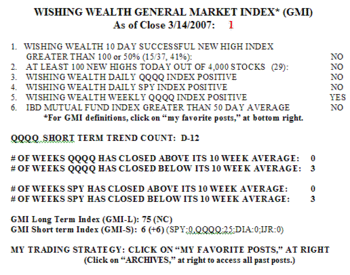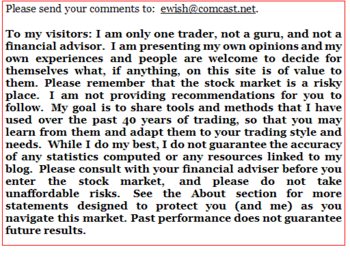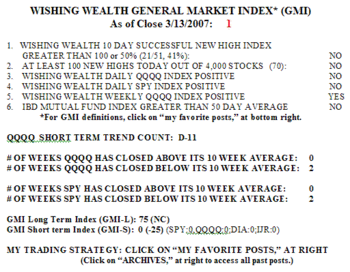The GMI remains at one. On Friday, 28-37% of the stocks in the Nasdaq 100, S&P 500 and Dow 30 indexes advanced. 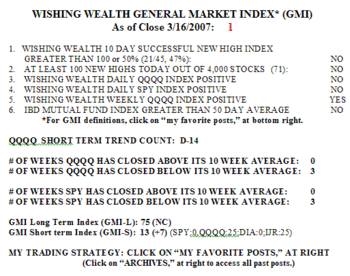 There were only 71 new highs in my universe of 4,000 stocks. The QQQQ is in its 14th day of a down-trend and has closed below its 10 week average for three weeks. Only 23 % of the Nasdaq 100 stocks closed above their 30 day averages, up from a low of 13% on March 13.
There were only 71 new highs in my universe of 4,000 stocks. The QQQQ is in its 14th day of a down-trend and has closed below its 10 week average for three weeks. Only 23 % of the Nasdaq 100 stocks closed above their 30 day averages, up from a low of 13% on March 13.
The IBD 100 stock lists are doing somewhat better than the Nasdaq 100 stocks. More of them (7) hit new highs on Friday and a larger percentage closed above their 30 day averages. 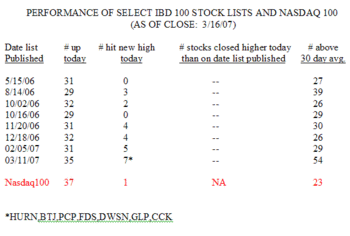
While the markets are in down trends, I am somewhat reticent to short stocks. I have to suspect that with the end of the first quarter coming and earnings due in April, we should get another bounce soon.
See my disclaimers at the bottom of my prior post.
